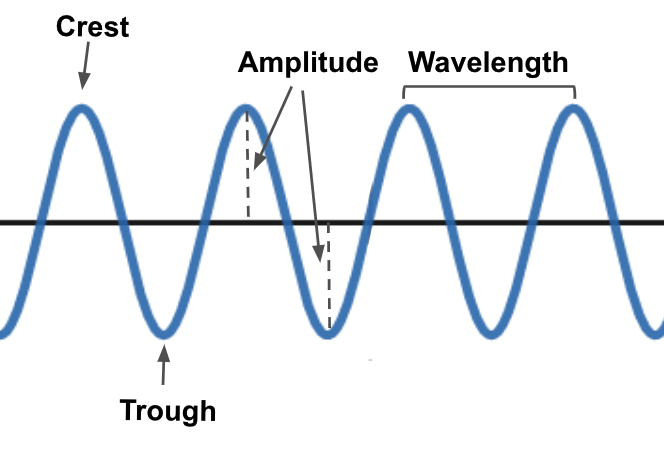True or false:
Waves can transport matter
FALSE!
Waves can transport energy NOT matter
Weathering, erosion or Deposition
_____ creates new landforms like sand dunes and beaches
Deposition
How can scientist prove that an environment or animal has changed over time?
Scientist can use fossils as evidence to show a change over time.
Clam shell- it is the bottom layer which means the others all formed on top of it.
How does vegetation stop erosion?
Roots act like fingers holding the soil in place. It covers the ground to protect it from rainfall like a giant umbrella.
Waves on a beach and in the pool act differently than deep ocean waves. What force causes these beach and pool waves to move matter?
Fiction between the water and the pool/ocean floor causes these waves to bunch together and move matter.
Name three erosion control methods that can decrease W.E.D
-vegetation
-Terracing
-Retaining Walls
-Blankets
-Mulch/straw/ground cover
-decrease the slope
-Nets
What is one piece of evidence that proves KY was once covered by water?
-Shark teeth in Mammoth Cave
-Shell fossils on the playground
Which rock layer would contain the youngest fossils?
layer 1
If a beach ball is placed in the ocean what will happen to it?
it will move up and down until the wind carries it onto shore
What process creates transverse (ocean) waves
wind
Weathering, Erosion, Deposition
The fossils of clams, which live at the seashore, were
found in a rock layer directly below a rock layer that
contained tree fossils.
This evidence can be used to support the idea that–
A fossils form more quickly at the seashore than
other places.
B clams and trees are always found in the same
area.
C the area where the fossils were found changed
over time.
D the layer containing the trees is older than the
clam layer.
C the area where the fossils were found changed
over time.

The layer containing dinosaurs
A lake is surrounded by hills covered with trees and shrubs. Which claim correctly describes how a change to the plants in this area will affect this environment?
A. Adding plants to the hillsides will increase sedimentation in the lake.
B. Adding plants to the edge of the lake will increase erosion by the lake.
C. Removing plants from the hillsides will increase erosion on the hills.
D. Removing plants from the edge of the lake will increase sedimentation on the hills.
C. Removing plants from the hillsides will increase erosion on the hills.
Ivey was boating in the middle of the Ohio river. While relaxing her baby sister found her favorite pair of sunglasses (they float) and threw them overboard. What will happen to the sunglasses?
The will go up and down in the water because waves transfer energy NOT matter
As some friends walked they noticed areas of the land where the soil seemed to be washed away from the rain. They thought this was strange and wondered what could cause this to happen.
The topsoil covering an area of land was washed away by rain. The land was most likely…
Steep, without vegetation
Steep, with vegetation
Flat, without vegetation
Flat, with vegetation
1. Steep, without vegetation
The fourth grade classes had finished their field trip and were hiking back to their busses. At the top of the mountain a student picked up a fossil that looked like a shell. See below.
The students had different claims about how the fossil ended up there. This is what they thought:
Ashley: A bird picked up the organism and dropped the shell as it flew over the mountain.
Molly: Water, ice, or wind eventually carried the fossil to the top of the mountain.
April: A mountain formed in an area that was once covered by ocean.
Joe: The fossil flowed out of a volcano that rose up from the ocean floor.
Who has the correct claim?
April: A mountain formed in an area that was once covered by ocean.
True or False
Volcanic eruptions, earthquakes and other natural earth process can effect the position of rock layers.
TRUE
Write a definition of each vocabulary word below
Weathering
Erosion
Deposition
Weathering-breaks it
Erosion-takes sediment to a new location
Deposition- Drops sediment in a new location
Draw a picture of a Transverse Wave label it with the following vocabulary
-Crest/peak
-Trough
-Wavelength
-Amplitude

My 3 friends and I went on a trip to St. Lucia in the Caribbean. While we were walking along the beach, Gerry looked down at the sand, picked it up, and poured some in our hands. We looked closely and realized that it was made of tiny pieces of rock and shell.
How was the sand on the beach created?
It was created by weathering, erosion, and deposition. Over millions of years rocks and shells have been weathered. They then get taken (eroded) and deposited on to beaches. New sand is constantly being made and beaches are constantly changing.
Ferns were found in a rock layer directly above a rock layer that contained cactus fossils.
Ferns are plants found in areas with very wet soil, while cacti do not need much water at all to survive. Based on this information, it can be concluded that the area where these rock layers formed changed in what way?
A Lots of plants changing to almost no plants
B Cold and icy changing to very hot
C Deep ocean changing to high mountain
D Very dry changing to much more damp
D Very dry changing to much more damp
Create a fossil record that includes 5 layers and shows a change in landscape over time from water to land.
(3 Minutes)
Mrs. Adkins will view each groups illustration :)
Use the data above to make a claim: How does the height of the wave affect the rate of erosion?
As the wave height increases the rate of erosion increases.